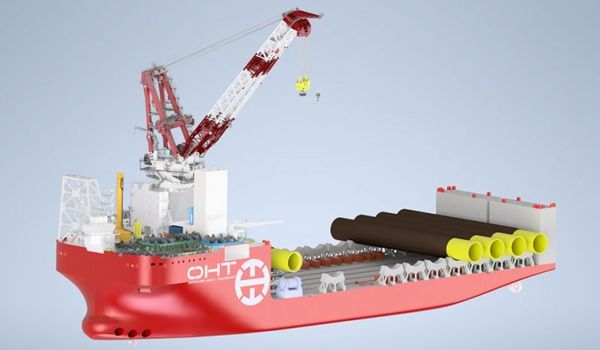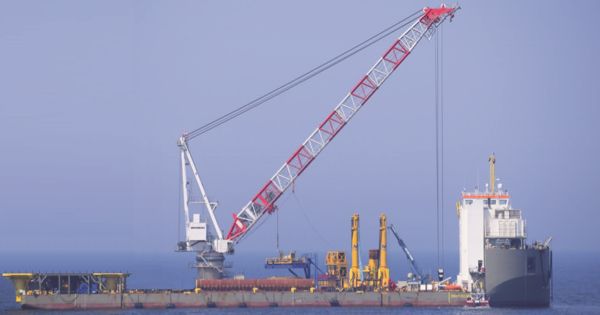A heavy lift vessel (HLV) is a vessel equipped with a crane capable of lifting thousands of tonnes. Large and heavy subsea structures, such as templates, may necessitate the use of HLVs for lifting. Most HLVs have lifting capacities ranging from 500 to 1000 ton (454 to 907 metric ton), whereas crane capacity on standard construction vessels is less than 250 ton (226 metric ton). The most important characteristics of an HLV are its stability and seakeeping abilities.
Massive heavy-lift crane vessels capable of hauling thousands of tons navigate the ocean’s rough waves and strong winds to build wind turbines and oil fields. An international group of researchers has created a new modeling system to aid in the control and, ultimately, the safety of such vessels. They published their method in the IEEE/CAA Journal of Automatica Sinica issue.
“Dynamic positioning allows the ship to stay fixed in a specific location by acting on the thruster,” said paper author Simone Baldi, professor at Southeast University’s School of Mathematics and School of Cyber Science and Engineering, and a guest at the Delft Center for System and Control at Delft University of Technology in the Netherlands.
Massive heavy-lift crane vessels, capable of hauling thousands of tons, navigate the rough waves and strong winds offshore to construct wind turbines and oil fields in the ocean. Researchers have developed a new modeling system to help improve the control, and ultimately the safety, of such vessels.
This positioning operation serves as a counterweight. The thruster exerts equal force in the opposite direction of the wind or wave attempting to dislodge the ship.
The lifting capacities of floating crane vessels have increased over time in tandem with platform size increases. The cost of offshore hook-up and commissioning is reduced by lifting topsides in larger modules. The current record for offshore lifting is 12,000 tons.
“However, it is occasionally the case that the dynamic positioning does not cope with such changes, causing the ship to oscillate instead of remaining fixed in one spot,” Baldi explained. “Our approach enables robust dynamic positioning in challenging sea conditions with large waves.”

Baldi and his team enhanced the dynamic positioning model system with a digital observer that can translate wind or wave disturbances into specific measurements that reflect position and velocity to help the vessels work safely in rough conditions.
All components of mooring systems, support structures, electrical infrastructure, and marine energy devices must be installed on suitable vessels. The majority of offshore floating wave energy converters currently being developed can be towed to the deployment site using vessels typically used in the offshore oil and gas industry.
Other proposed models, according to Baldi, include observers as well, but those observer designs typically rely on vessels responding quickly to measured disturbances, which is often impossible due to the sheer size of the thrusters and propellers.
To address this issue, the researchers used known variables such as the strength of the lines and thrust holding the ship to the construction site, as well as worst-case scenario ranges for unknown variables such as wind and waves. The researchers then used an observer-controller composite to convert motion into measurements in order to inform operation directions while also allowing the vessel to respond in a reasonable amount of time. The design is guided by key performance indicators while considering the worst-case uncertainty scenarios.
“We have currently tested our method in a realistic simulation, which is only the first step,” Baldi explained. The researchers hope to test the proposed solution on a small-scale ship under controlled conditions next, before moving on to tests on heavy-lift crane vessels at sea, according to Baldi.
















